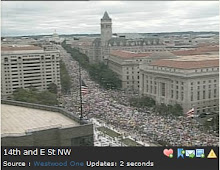First Cash for Clunkers, Now Cash for Homes?
Waxman-Markey proposes a new national tax of historic proportions
Related Links
Waxman-Markey's Other Problematic Provisions
$67 Billion a Year to Africa Because We Emit Carbon Dioxide
Heritage's Research on the Cap and Trade Global Warming Bill
Despite being extremely wasteful and creating questionable environmental benefits, the government labeled the cash for clunkers auto program a successful program that exceeded expectations. It worked so well – why not subsidize (again) the housing industry while we’re at it?
Detailed in Section 203 of the Waxman-Markey cap and trade bill is a program that subsidizes the purchase of new Energy Star qualified “manufactured homes” (homes built in a factory, such as mobile homes) for people currently living in manufactured homes built before 1976 (Sec. 203, b).
Qualified recipients are eligible to receive up to $7500, and the old home must be either recycled or rendered “unusable;” furthermore, all members of the owner’s household must not exceed 200 percent of the applicable federal poverty level for income.
Essentially the government is encouraging consumers to purchase homes they might not be able to afford and potentially incur more debt. How was the home mortgage crisis caused again? Such market distortions send the wrong signals to buyers, especially when the program focuses on low-income families that may not be able to afford a mortgage payment. And what will classify a home as unusable? Although there’s mention of recycling the home, are we going to see something similarly as wasteful as when the government forced auto dealerships to destroy car engines that were perfectly usable?
Also included in the bill (Section 304) are arbitrary new building energy efficiency targets, requiring homes and commercial buildings to cut energy use by 30 percent immediately and by 50 percent by 2014 and 2015 respectively. The bill also gives the energy secretary the power to raise the standards any time he wants. New standards will add thousands of dollars in additional costs to real estate, and you could face a tax when trying to sell your home if your home doesn’t meet energy code requirements.
For the most part, consumers know a good deal when they see one. They’ll make the switch to more energy efficient products and homes if the benefits outweigh the costs. If it saves them money, consumers will invest in energy efficient buildings, appliances, etc.—it’s not something Washington should tell them to do.
Waxman-Markey requires the establishment of national energy efficiency building codes to meet the targets outlined, with one year to achieve compliance, (Sec. 304, b1A) and it requires states to implement and enforce these codes (Sec. 304, e1). The bill authorizes the federal government to conduct inspections where the state fails and to charge fees to cover the costs of inspections (Sec. 304, f) and creates an arbitrary formula for allowance allocations to ensure state compliance.
Waxman-Markey also includes a program called the Retrofit for Energy and Environmental Performance (REEP), which is charged with implementing standards for a national energy and environmental building retrofit policy affecting both residential and nonresidential buildings. It requires that retrofits done in accordance with the REEP program increase the reflectiveness, of those buildings’ roofs (Sec. 202, f7) —this often entails painting roofs white.
Again, energy efficiency is a good thing. It helps people save money and help the environment. And after the past few decades, homes have become dramatically more energy efficient. But it’s rarely good when but the government tries to mandate energy efficiency with arbitrary requirements. The result is higher sticker prices, reduced choice for efficient products and, if a product is rushed into the market, reduced quality.
Next week, we’ll detail some of the other efficiency regulations in the cap and trade bill
Thursday, September 10, 2009
Subscribe to:
Post Comments (Atom)
















No comments:
Post a Comment